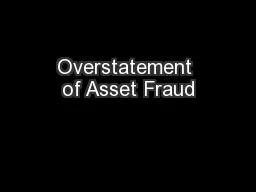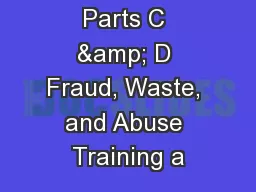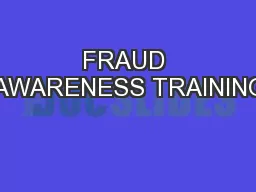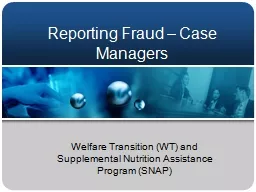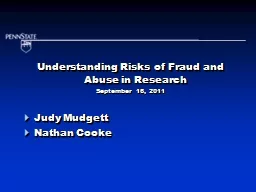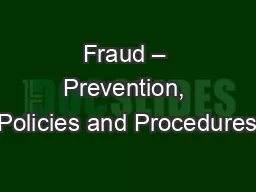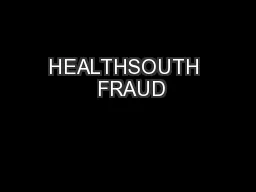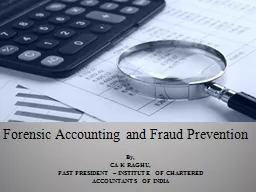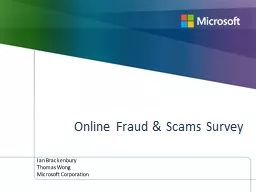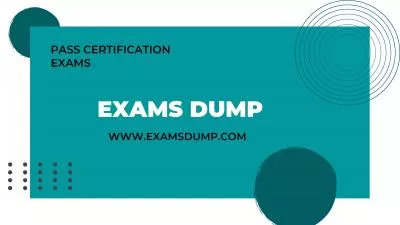PPT-Overstatement of Asset Fraud
Author : marina-yarberry | Published Date : 2018-10-22
Copyright 20142015 AICPA Unauthorized copying prohibited CUC fraud One of the ways in which CUC allegedly committed financial statement fraud was to defer costs
Presentation Embed Code
Download Presentation
Download Presentation The PPT/PDF document "Overstatement of Asset Fraud" is the property of its rightful owner. Permission is granted to download and print the materials on this website for personal, non-commercial use only, and to display it on your personal computer provided you do not modify the materials and that you retain all copyright notices contained in the materials. By downloading content from our website, you accept the terms of this agreement.
Overstatement of Asset Fraud: Transcript
Copyright 20142015 AICPA Unauthorized copying prohibited CUC fraud One of the ways in which CUC allegedly committed financial statement fraud was to defer costs that should have been expensed into future periods by recording them as deferred charges assets By delaying recognition of these expenses CUC was able to boost its current period net income at the expense of future net income as well as artificially inflate the amount of assets on the balance sheet . Protecting Organizations and Their People. Presenter’s Name. Presenter’s Title. Presenter’s Contact Info. Overview. The Facts . Fraud Defined. Why’d They Do It?. Who Did It?. Policy. Red Flag Hotline. Developed by the Centers for Medicare & Medicaid Services . Issued. : February, 2013. This training module consists of two parts: (1) Medicare Parts C & D Fraud,. Waste, and Abuse (FWA) Training and (2) Medicare Parts C & D General . INTRODUCTION. . DISCUSS . ADOPTION OF FRAUD AND THEFT . POLICY. ASSIGNS . RESPONSIBILITY FOR REPORTING FRAUD AND . THEFT. PROVIDES . GUIDELINES FOR INVESTIGATIONS OF SUSPECTED . FRAUD . OR . Welfare Transition (WT) and Supplemental Nutrition Assistance Program (SNAP). Commonly Used Terms. Fraud. Public Assistance Fraud (PAF). FLORIDA. CLRC screen. OSST. Alternative Plan. Case Notes. What is Fraud?. September 16, 2011. Judy Mudgett. Nathan Cooke. Overview. Background on Fraud/Abuse. Fraud/Abuse by Phase of Research. Real Examples of Fraud. Available Resources . Why Important?. Why Important?. Why Important?. Ryan Burnett. Caitlen. . Eibeck. Mike Davis. Acctg403-001. Pennsylvania state university. Professor . izzo. 3/1/2015. Greed and Pressure. Greed. Greed can be attributed to personal financial gain, attempts to conceal losses and/or poor job performance that could harm a person’s employment, and enhancing potential bonuses, among other factors.. Roselli, Clark and Associates . Certified Public Accountants. 2. Introduction. Presenters:. Tony Roselli, CPA, Partner. Chad Clark, CPA, Partner. Cash handling. Frequency of fraud. Detection of occupational . ambiguity. contradiction. paradox. irony. overstatement. understatement. Denise Stanley. Ambiguity. A technique by which a writer deliberately suggests two or more different, and sometimes conflicting, meanings in a work.. How can we differentiate between the 3 types of irony, and learn about understatement, overstatement, and paradox?. Do now: . Identify the three examples of irony below (situational, dramatic, verbal):. What are the central securities depositories doing to mitigate this risk?. Cancún, . May. 21, 2015. What is Fraud?. Generally, fraud is described as a deliberate act of abuse of trust, taking advantage of swindles. . LESSONS LEARNED. ETHICS . . FIRST. Richard M. Scrushy. $100,000 Coffee Mug. SUCCESS. In 1806 Webster’s Dictionary defined success as “being generous, prosperous, healthy and kind.”. Today, Webster’s defines success as “the attainment of wealth, fame and rank.”. By,. CA K RAGHU, . PAST PRESIDENT – INSTITUTE OF CHARTERED ACCOUNTANTS OF INDIA. Introduction. A specialized field of accountancy. Application of Financial Skills and investigative mentality . Investigating fraud and analyzing financial information to be used for tracking and collection of forensic evidence. Ian Brackenbury. Thomas Wong. Microsoft Corporation. Background. This report summarizes . research to . understand perceptions . and exposure to online fraud and scams. The . research was . conducted by the . kindly visit us at www.examsdump.com. Prepare your certification exams with real time Certification Questions & Answers verified by experienced professionals! We make your certification journey easier as we provide you learning materials to help you to pass your exams from the first try. Professionally researched by Certified Trainers,our preparation materials contribute to industryshighest-99.6% pass rate among our customers.Just like all our exams.
Download Document
Here is the link to download the presentation.
"Overstatement of Asset Fraud"The content belongs to its owner. You may download and print it for personal use, without modification, and keep all copyright notices. By downloading, you agree to these terms.
Related Documents

